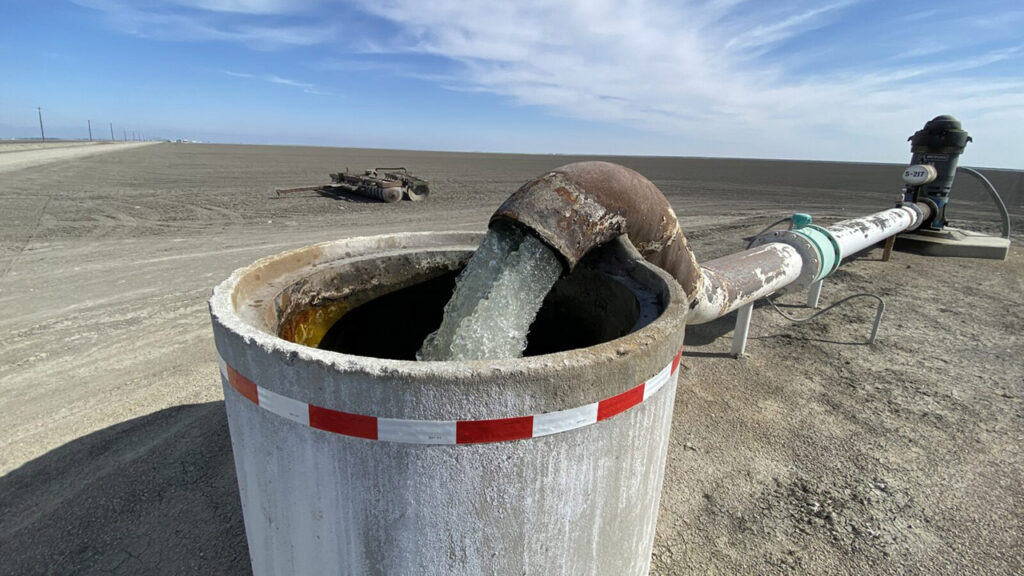Share
A sale of agricultural water within the Panoche Water District on the west side of the San Joaquin Valley hit the eye-popping price of $2,000 per acre-foot recently.
The buyer bought 668 acre-feet in a deal that was brokered by Nat DiBuduo with Alliance Ag Services. The buyer, whose name was withheld, was willing to pay that cost to assure the future of his crops this year, according to the brokerage company.
Last year, the same sellers, also unnamed, sold water for $1,648 and $1,800 per acre-foot, indicating how the third year of drought is pushing up the price of water, according to the broker.
Water sold through the federal and state projects costs about $40 and $120 per acre-foot, respectively. However, those prices don’t reflect how much contractors pay for upkeep of the system and other costs, especially for state water contractors who have to pay the full cost of their contracts regardless of how much water they receive.
Rising Prices Aren’t Surprising
Representatives from other agricultural water districts around the San Joaquin Valley said this was the first they had heard of ag water going for $2,000 an acre-foot, though most had heard prices were increasing.
“$2,000 is news to me,” texted Jeevan Muhar, general manager of the Arvin-Edison Water Storage District in southern Kern County. “I had heard $1,600 a few months ago.”
“I’m not surprised,” texted Jason Phillips, CEO of the Friant Water Authority. The authority operates the Friant-Kern Canal, which brings water from Millerton Lake north of Fresno all the way down to Arvin.
Two thousand dollars may seem like a lot, said Panoche General Manager Ara Azhderian. But he’s been hearing of other sales at $1,700 per acre-foot, which could also incur other costs depending on how far the water needs to be moved and how much is lost to evaporation or seepage along the way, bringing the price close to $2,000 an acre-foot.
Panoche, like Friant and Arvin-Edison, gets its surface supplies through the federal Central Valley Project. But Panoche is part of the South of Delta contractors, which received a 0% allocation this year. Friant received a 15% allocation, which could change if other federal water users need to make a call on that water.
High Price for Water, Low Price for Almonds
That price isn’t so different from what Azhderian recalls during the height of the last drought in 2015. But the difference he’s seeing now is almonds that were selling for $4.50 a pound in the last drought are down to $1.50 a pound now and tons of nuts are still backlogged, waiting to be shipped with more tons piling up on trees.
“We’ve seen growers this year who, rather than spending that kind of money for water, are just yanking out orchards,” Azhderian said.
Some farmers are letting land go fallow and selling their water to replace the lost income, others are pivoting to new crops, he said.
While almond prices are in the tank, canning tomatoes are selling at historic highs of $105 a ton and cotton is up to $3 a pound, Azhderian said.
“Some of our growers are taking out almond orchards that are past their peak and going back to row crops, if they have the water,” he said.
$2,000 an Acre-Foot Is Unsustainable
Even with better crop prices, $2,000 an acre-foot is unsustainable for most farmers over time, said Tim Ashlock, general manager of Buena Vista Water Storage District in Kern County.
For one or two years, though, the math may work out.
“If you have the first 2.5 acre-feet you need, that’s not going to give you a crop,” he said. “But if that last acre-foot gives you your entire crop, even at $2,000, it may be worth it. Because, without it, you’ve got zero.”
Buena Vista typically has excess water to sell, but this year it only has a small amount of banked water. It’s selling that water to other ag districts for $850 an acre-foot, Ashlock said.
About SJV Water
SJV Water is an independent, nonprofit news site dedicated to covering water in the San Joaquin Valley.



















